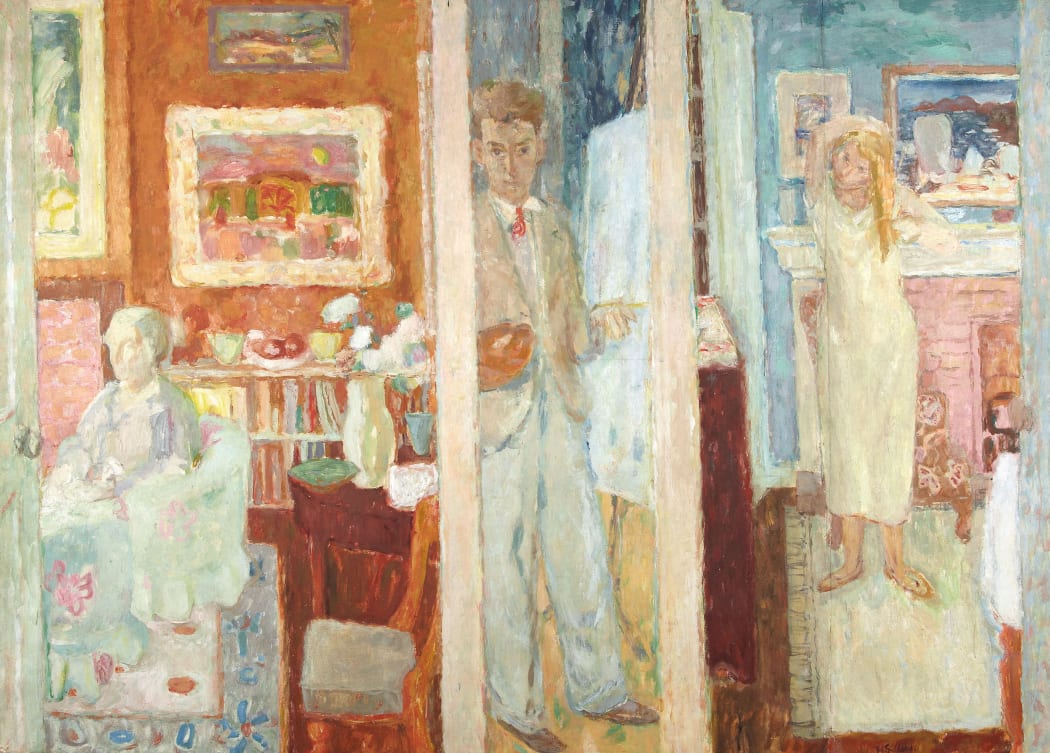
In 1973 we received the single largest bequest we have ever been given. It spans the entire career of the artist Sir William George Gillies RA RSA RSW. From teenage works to the painting left on his easel when he died, it includes oil paintings, watercolours, drawings in a variety of media and sketchbooks. Critically, there is also an archive of photographs, correspondence, writings and an associated private library.
2023 marks the 50th anniversary of Gillies’ death, and the 125th anniversary of his birth. To commemorate these important milestones, we have opened two complimentary exhibitions of his work.
The first, in his native Haddington where he lived until 1929, is on show in the John Gray Centre until 26 April 2024. The exhibition concentrates on work related to his time there. As a teenager his aptitude for art was recognised by his maternal uncle, an art teacher called William Ryle Smith. And by Robert A Dakers, the Editor of the Haddingtonshire Courier and a competent amateur landscapist. Both men took the young Gillies on sketching trips in and around Haddington. Smith introduced him to watercolour, which he would go on to produce some of his finest work in, and Dakers introduced Gillies to working in oil paints.
With this excellent practical preparation, Gillies successfully applied to Edinburgh College of Art (ECA). His studies there were interrupted by his call-up, which saw him on active service on the Western Front with the Cameron Highlanders during the First World War. Wounded and gassed, he survived the war physically, but his experiences left mental scars which he spent much of his life trying to eradicate through his art.
After the war ended Gillies resumed his studies and graduated in 1922. Following a short spell teaching at Inverness Academy, Gillies secured a part-time post at ECA in 1924. This eventually led to the Gillies family (Gillies, his widowed mother and his two sisters Janet and Emma) selling up and moving to the east end of Edinburgh.
The second exhibition can be seen in Gallery VII at the Royal Scottish Academy until 28 January 2024. This show includes a select number of important works from all periods of Gillies’ career. They are unified by their relevance in the repositioning of Gillies not simply as a Modernist, but as a British Modernist.
When we mounted our major Gillies Centenary exhibition back in 1998, the concept of Gillies as a Modernist was first proposed. Previously he had been regarded as something of a ‘country lad’, recording the Scottish landscape through which he travelled so extensively, off-set by still life paintings.
The present exhibition is set against the detailed research which Andrew McPherson, author of William Gillies: Modernism and Nation in British Art, a new monograph on the artist, has conducted over the last 20 years. Central to this has been an in-depth consultation of the Gillies Bequest, including the Gillies Archives. The publication examines Gillies’ art, but also addresses the personal traumas he wrestled with, and examines how Modernism helped him cope. The exhibition explores the previously unacknowledged use of symbolism in Gillies’ work, as well as the more obvious influences of Post-Impressionism, and Cubism.
In addition to our current exhibitions, Modernism and Nation will tour eight venues across Scotland throughout 2024 and 2025. We’ll be visiting Rozelle House, Hawick Museum, Perth Art Gallery, Taigh Chearsabhagh, Pier Arts Centre, Inverness Art Gallery, Gracefield Arts Centre, and Kirkcudbright Galleries, with each venue presenting a version of the show with a different focus.
A second, expanded volume of William Gillies: Modernism and Nation in British Art by Andrew McPherson is due for publication by Edinburgh University Press in 2024.


